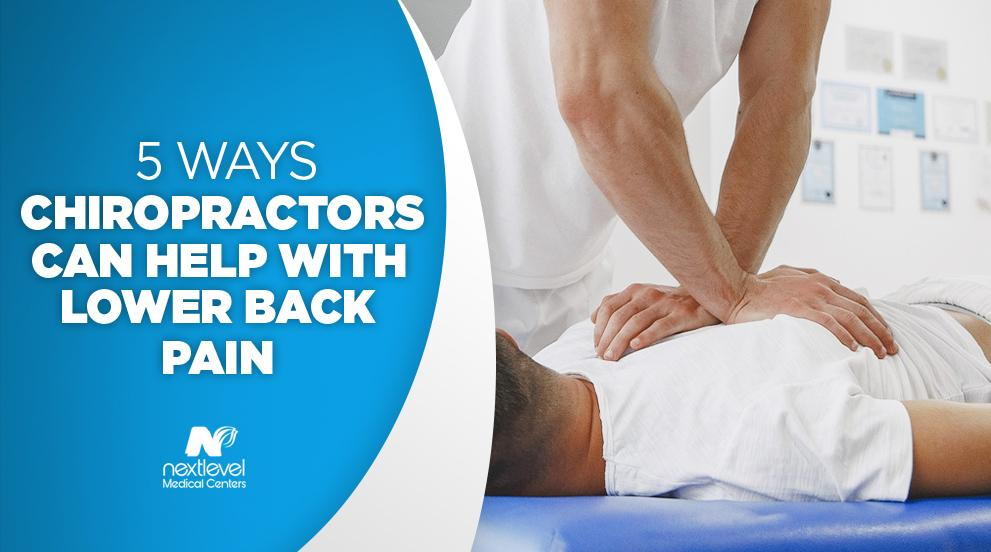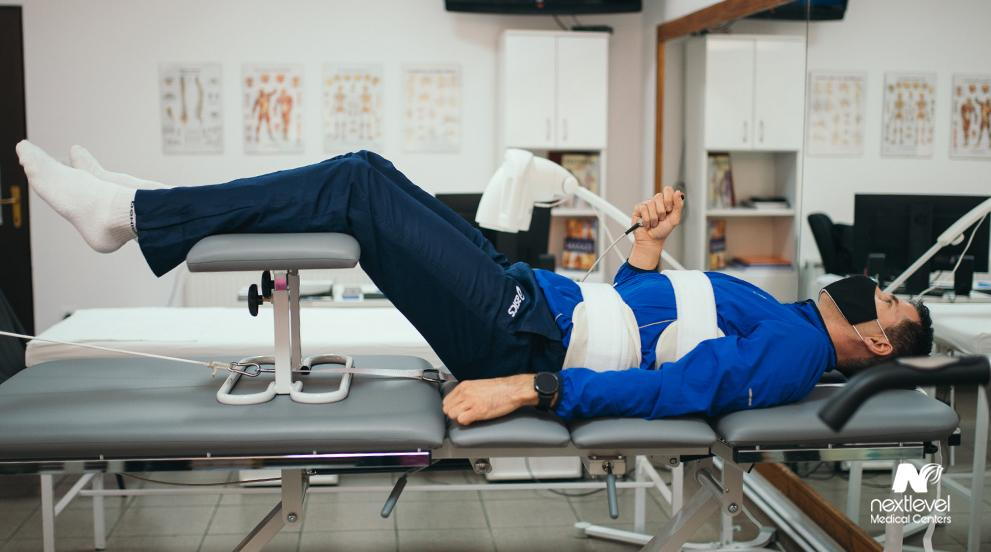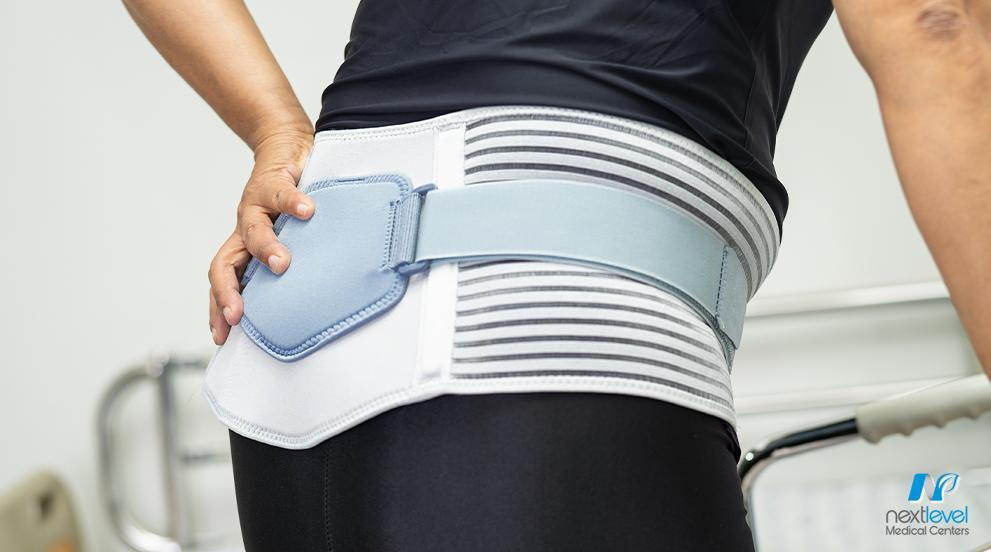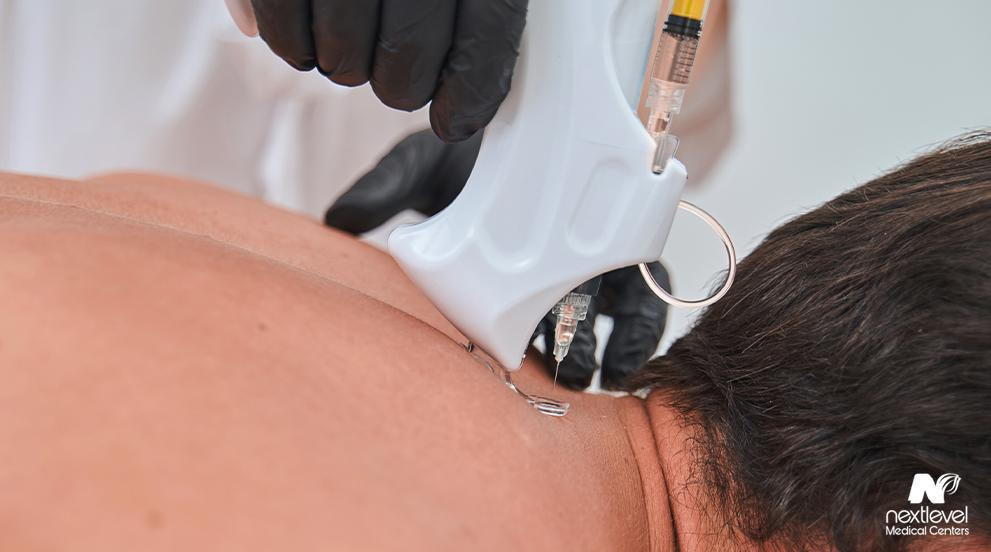
As we progress in life, our body goes through various strains and damage that make it more challenging to go about our daily lives. Often, the main strain directly affects our lower back and makes standing up straight and withstanding the strain of lifting objects a near insurmountable challenge. With the intense pain brought about by lower back pain and injuries, the average American is generally looking for methods that can be employed to alleviate it.
Several exercises and techniques can be executed at home to help alleviate this strain. Still, these are far less effective than supervised care from a chiropractor to ensure you get the most out of your recovery. However, some are unsure what exactly a chiropractic expert has to offer that makes recovering under their care more efficient. With this article, we hope to shed some light on what a chiropractor can do to help reduce and alleviate lower back pain.
#1: Non-Surgical Spinal Decompression Therapy
One of the best services a chiropractic practice has to offer is spinal decompression therapy, otherwise known as spinal traction. One of the most significant advantages for those who suffer from chronic lower back pain is that it is a non-invasive, non-surgical treatment avenue that affords the patient a great deal of relief.
Spinal decompression therapy involves you lying back on a table as a harness is secured around your pelvis and trunk. The harness is then connected to a computer that the chiropractic specialists adjust to provide a customized output from the machine for your treatment. The parameters will be adjusted to what is needed for your specific injuries. The harness will then begin to apply pressure at specific parts of the spinal column and slowly squeeze misaligned disks and other vertebral components until everything is back in place.

On average, spinal decompression therapy consists of anywhere between 20 to 28 appointments over the course of a 5- to 7-week period. Fortunately, the treatment itself only lasts between 15 to 45 minutes, meaning you will not have to spend an excessive amount of time connected to the harness.
To date, spinal decompression therapy has been used to treat sciatica, general neck and back pain, herniated disks, degenerative disk disease, posterior facet syndrome, or even just injured spinal nerve roots. Thus far, the results of spinal decompression surgery have proven to be a reasonably effective treatment avenue with promising results. However, with that in mind, it should be noted that the procedure is still relatively new, and there is still research going on to compare it to older treatment types.
Overall, there have been few issues found with the procedure. Still, you should avoid spinal decompression therapy if you have a fracture, tumor, abdominal aortic aneurysm, advanced osteoporosis, or metal implants in your spine. These conditions could be exacerbated by the pressure the decompression harness uses to treat you. If you oppose spinal decompression therapy, alternatives available can be just as effective depending on how extensive the damage is.
#2: Bracing
Bracing is generally used as a treatment for scoliosis. In addition, bracing is commonly used for lower back pain and misaligned vertebral columns. In many cases, the lower back pain you are experiencing comes from a misaligned portion of your spine, adding to the standard strain you feel just from supporting your own body. Braces can be somewhat obstructive but remain one of the most non-invasive methods for straightening out such misaligned vertebral columns, with proven results dating back to the 20th Century. However, braces are not as straightforward as you might imagine and come in several models whose use is dictated solely by the severity of the misalignment in the body.
There are three major brace models, but only two see extensive use today. The Boston model is a premade brace fitting the patient's measurements that is tweaked with additional attachments designed to aid with the specific issues the patient is having. The Wilmington model is a custom-made brace explicitly tailored for the patient from the jump to maximize its benefits for pain and vertebral issues.

No matter which models you are using, the brace is designed to apply pressure as you go about your daily business so that your spine begins realigning itself automatically. However, braces do come with the disadvantage of limiting your maneuverability. Flexible braces are specifically designed for treating lower back pain without this restriction. These flexible braces offer a little extra range of motion while treating your lower back issues.
However, it is essential to remember that braces are primarily used to treat scoliosis. Therefore, while braces are effective for one issue, they have their strengths and weaknesses like every other treatment.
Ultimately, depending on the severity of your back pain, you might already be facing some severe motion issues regardless of a brace. If a brace is not entirely to your liking, other options are still available for treating your condition.
#3: Trigger Point Injections
Now, the idea of getting injections might seem like a daunting prospect since no one likes to be jabbed with needles. However, sometimes injections can be just what the doctor ordered when treating lower back pain, especially if that pain directly results from trigger points. Myofascial trigger points (MTrPs) are bundles in the muscle of the human skeletal structure that have become oversensitive to stimuli. Originally coined in 1942 as a blanket explanation for symptoms whose sources could not be identified, trigger points are becoming somewhat more accepted in medical science as new research begins to point to their existence.
One of the most prominent symptoms associated with trigger points is intense pain around the site of the knot, including those forming in the lower back. While your chiropractor cannot personally administer trigger point injections to treat these MTrPs, unless they happen to have a doctorate, they can recommend the treatment and have your primary care physician perform the procedure.
The treatment itself is minimally invasive and will be rapid both in terms of administering the injections and the post-procedural recovery time; the results are nearly instantaneous.

Trigger point injections are generally administered while lying forward with your lower back exposed to the doctor administering them. At this point, your physician will press down on the troubled area to identify the location of the trigger point before sliding a needle into your lower back and injecting an anesthetic or a saline solution. The actual process of injecting the solution is guided via ultrasound technology to ensure there are no issues and the solution goes where it is supposed to. The solution then alleviates the pain of the trigger points and spreads to the rest of the body, offering potential pain relief for any issues you might have.
Trigger point injections are a highly effective treatment option, despite the ambiguity behind what exactly constitutes a trigger point. However, if your chiropractor or doctor says you might have a trigger point causing your pain, then the odds are good that they are right.
There is more information regarding trigger points, but they can serve as an excellent option for treating and managing your lower back pain. However, other options do not involve needles if this is not for you.
#4: Physical Therapy
Perhaps the most obvious option available for physical pain, physical therapy is a tool used by chiropractors to help reinforce your body to alleviate and prevent future pain. For the most part, physical therapy is used as a preventative method but can also readjust your spine and reduce the pain you are suffering at the moment. However, physical therapy can only be pursued after the cause of your pain has been identified so that you do not perform any exercises or motions that wind up making the problem worse.
Several physical therapy exercises are employed for multiple different injuries and strains, and lower back pain is no exception. One such option is repeated motion exercises, which are ideal for pain stemming from nerve pressure from a bulging disk or spinal stenosis. Repeated motion can help force the disk back into place as your body shifts and readjusts back to default.

You can also pursue stabilization exercises for spines that regularly deviate from standard. Again, the main issue is that physical therapy regimens are dictated based on the needs of the individual, and your chiropractor or physical therapy coach will help you determine what is best for you.
Physical therapy is a long-term commitment to your recovery since you need to maintain a regular exercise schedule and follow your expert's instructions. Failing to do so could result in a relapse to the level of damage you had experienced before and will leave you in just as much pain as when you started. At the end of the day, physical therapy might be a viable option for your treatment but will only be effective if the damage is not overly extensive. However, it is an effective avenue of treatment for many physical issues in many cases.
#5: Adjustments
One of the most well-known services a chiropractor offers is spinal adjustment and manipulation. These adjustments involve a high-speed thrust of the arm against the affected vertebra to adjust the position of the vertebral column and any misaligned parts. The exact position that will receive the pressure and with what force will depend on the severity of the damage or pain you are experiencing and will only be done once your chiropractor understands both. This procedure generally includes seeing x-rays of the damage before they even consider performing the adjustment.
After the pressure has been successfully applied, you should find that the pain has diminished to some degree, and you have regained some range of motion. However, adjustments are not 100% guaranteed to work, and even if they do, the research on such adjustments has found that the effect is modest and impermanent.

While adjustments do affect lower back pain, they are more effective for injuries to the neck instead. However, if this is the treatment avenue you want to pursue, speak to your chiropractic caregiver about it to see their stance on the matter. Otherwise, adjustments might best be left for another time while you pursue one of the other potential treatment avenues available for your back pain.
Wrapping Up
Chiropractic clinics have several tools and techniques to draw on, including the five discussed here. However, the efficacy of each treatment will vary from person to person, as the correct treatment path is dependent solely on you and your injuries. Lower back pain is something virtually everyone goes through at some point in their lives. It can range from slight discomfort to completely debilitating, depending on how severe the damage is.
Taking advantage of a chiropractor does not require a consultation with your primary care physician, but it can be beneficial to ensure the full extent of the damage so that no additional damage is done due to misinformation.

Fortunately, some facilities allow for all of these treatments and more, within the same four walls. Finding the best care facility is an essential next step to managing your lower back pain, and we are here to help. At Next Level Health, we have tailored several treatment plans for dealing with lower back pain, along with many other physical ailments. Created and fine-tuned by professionals like Dr. Emmett Blahnik, we stand ready to help you with your pain management and relief needs. So, if you are dealing with lower back pain, please contact us today and let us take your health to the Next Level.
If you have any questions or concerns about any of these back pain alleviation methods or about what services we can provide for you at Next Level Health, please do not hesitate to reach out and contact us at any time. We understand that looking for potential remedies to your pain can be both stressful and incredibly serious, so we would be more than happy to assist you however we can, and to the best of our abilities.